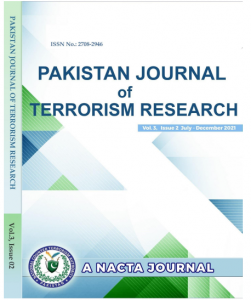Disengagement and Deradicalization Programs in Pakistan: A Comparative Analysis
Keywords:
Deradicalization, Preventing Violent Extremism, Countering Violent Extremism (CVE), Rehabilitation, Disengagement, MainstreamingAbstract
In the recent past, countries have used different models and programs to persuade extremists to give up their extremist views, or at least, embark on the route of violence. In the course of the last ten years, the arena of peace-building has witnessed an expanded understanding of the drivers of violent extremism (VE). Research has demonstrated that there are a variety of factors at play, mainly grievances at the state society level, human rights abuses, perceptions of social and economic marginalization or deprivation, lack of access to justice, sense of purpose in life have shown to be motivating factors that push an individual towards the path of extremist violence. Many countries are undertaking disengagement and deradicalization programs to prevent and counter violent extremism and rehabilitate former extremists and other offenders back into society. Many of such programs are undertaken in detention centres, which makes an independent assessment of these projects difficult.
Preventing and Countering Violent Extremism (PVE/CVE) programs involve a broad range of non-coercive and preventative activities that are combined to counteract the key drivers of violent extremism specific to the locations/contexts in which the programs are taking place. The National Internal Security Policy 2018 (NISP-II) places particular focus on developing incentive structures to provide a way out to militants stuck in the cycle of violence. Development and implementation of deradicalization and rehabilitation programs were also recommended to help "at-risk" individuals to shun violence and build resilience towards violent narratives.
There have been various disengagement and deradicalization programs in Pakistan such as Sabawoon, Rastoon, Mashal, Paiman, and UNDP’s Local-level Disengagement and Rehabilitation Program. The purpose of this research paper is to conduct a comparative analysis of various programs implemented by the state and development sector, analyzing the strengths and weaknesses of various approaches and future directions.

